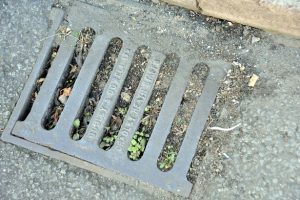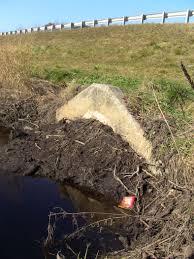Ok so anyone that has known me for any length of time will appreciate that vehicle maintenance is a bit of a minefield for me. This has led to some really expensive bills in the past and even resulted in a former colleague buying me a book in the hope that I would realise there was more to keeping a car on the road than just topping it up with petrol.
Drainage like cars is no exception and if you fail to undertake the appropriate level of TLC to keep it flowing and blockage free it can lead to a whole raft of problems including flooding, water pollution incidents and collapse.
Like with my car these can be extremely costly and disruptive, and not only cause issues for your development but also the ones around you.
The great news is that as part of the planning process local authorities are increasingly asking for a maintenance strategy which ensures that you consider it early on and really get to grips with what you need to do to keep your drainage in tip-top condition.
This week as we continue to look at what drainage documents are required in planning we will be taking a closer look at the drainage maintenance strategy, finding out why it is important, what should be included and what it might look like.
What is a maintenance strategy?
A maintenance strategy is simply a plan which highlights what you will need to do and when to ensure that your system continues to perform as it was designed. It is there to inform anyone responsible for the continued operation and maintenance of a system of the steps that they will need to take and any likely costs so that they can be planned for a budgeted.

While it is usually a standalone document submitted as part of a planning application, it can also be incorporated into the calculation pack or the Flood Risk Assessment depending on the requirements of the Local Planning Authority.
Surely maintenance is considered at the end
Generally, the earlier you consider maintenance the better and your designers should be considering the whole life cycle of the systems as part of their solutions. While officially, maintenance strategies are only required as part of a full planning application, as designers should have all this information to hand it makes sense for them to pass this onto you. There is little benefit in them designing a system for you which cannot be maintained, will become blocked and as a result, will not operate effectively.
Through their designs, engineers may look at the following with relation to maintenance:
- The accessibility of the drainage systems as something hard or dangerous to maintain is unlikely to get the love that it needs.
- Whether there is a requirement for any temporary drainage to prevent the build-up of sediment within the system during the construction process.
- Where Sustainable Drainage Systems have been specified that sufficient space has been allocated for the removal and disposal of any green waste.
- That systems have been included that reduce the maintenance requirement, such as the inclusion of silt traps, catchpits and forebays.
Once the design is complete, they should take steps to pass on this information to you, the end-user through the maintenance strategy as knowing your maintenance requirements provides the opportunity for you to really understand your system and know exactly what you are signing up for, preventing nasty surprises later on.
What should be included?
Local planning authorities may have their own requirements as to what should be included so it is always worth holding those early discussions, however, some things which are usually considered include:
- A plan showing where drainage features are located.
- An overview of how the system is supposed to operate, what attenuation has been included and whether there are any flow restrictions.
- Are there any visual triggers which could indicate that maintenance is required such as ponding at the surface or debris build-up in SuDS features or gully pots.
- What maintenance activities are required and how often are they needed.
- Any operational information such as areas where stockpiling of materials is not permitted, such as on permeable services etc.
- Key contact details which highlight who to contact if this system is not performing as intended or in the event of a pollution incident on the site.

Ok, so are there any other benefits?
The inclusion of a maintenance strategy within your planning submission can also help make the planning process smoother as it will demonstrate to your planning officer that you have taken account of maintenance as part of the design and help prove the competence of your design engineer.
Summary
So, in summary, a maintenance strategy is not just something that potentially needs to be submitted as part of the planning process but can be a valuable tool for both you and the planning authority in understanding your drainage system and demonstrating that you are committed to ensuring that it continues to operate as designed.